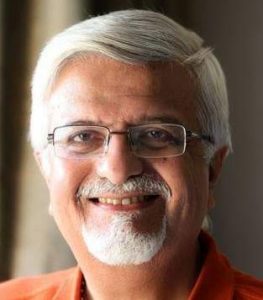 MARKET PERSPECTIVE
MARKET PERSPECTIVE
By Jawahir Mulraj
But we decide which is right…
By J Mulraj — Dec 13-19, 2020
Source: NASA/ Aubrey Gemignani
In their album, Days of Future Passed, the Moody Blues sang a seminal number, ‘Nights in White Satin’. In it, they refer to the moon as the
‘Cold hearted orb that rules the night,
Removes the colours from our sight,
Red is gray, and yellow, white,
But we decide which is right,
And which is an illusion’.
Today each news item has several, and differing, narratives. Together with tools to edit and modify pictures and videos, these end up presenting a confusing dilemma to readers/viewers. It is we who decide which is right, and which is an illusion.
Take, for example, the continuing challenge by President Trump to prove he won the election even after the Electoral College has certified that Biden had. Trump’s plan is to not accept the election results when the US Congress meets on Jan 8, 2021, depending on a report of the Director of National Intelligence, John Ratcliffe, that there was foreign interference in the US elections. Then, based on the 12th Amendment to the US Constitution, which grants one vote per state (not per congressmen, where the Democrats have a majority), he hopes to retain the presidency. Those interested in Trump’s stragegy can hear a video presented by P Gurus.
There are, of course, several opposing narratives by main stream media, claiming that Biden has won and it is now a done deal. He will be the next President and will walk into the White House on Jan 20, 2021.
It is amazing that we have to await final results of elections in the world’s super power for 2 ½ months! Till such time, we decide which is right, and which is an illusion.
A big concern being expressed now is whether Biden would be able to stand up to an increasingly belligerent China. This concern becomes even more pronounced after a company, SolarWinds, was hacked, (ostensibly by Russia), a hack which compromises US Federal agencies like homeland security, its nuclear storage facility, its energy agencies etc. as well as big companies like Microsoft.
There is a counter narrative, which says that China is facing a lot of financial problems, as a consequence of several factors, including the shifting of manufacturing bases to other countries, the food crisis due to floods (it imported huge quantities of rice and soy beans) and the over ambitious B&R projects financing countries unable to bear the cost (the debt trap). Besides the Central Government, China encourages local governments to borrow, to fund their own infrastructure and other projects, and this is called Local Government Debt (LGD).
While data is not reliably provided, it is estimated that in 2017 China’s LGD was between $ 2.5 to 4 trillion. Its central Government debt is over 3X its GDP. This is probably the reason why its Government owned companies like Tsinghua Unigroup (a chip maker) and Brilliance Auto (a car company and partner of BMW) have recently defaulted on bond payments, which can adversely affect its $ 15 trillion bond market.
China’s equity market will be adversely affected by the decision of index providers, after a Trump order, to delist from global indices, leading Chinese firms. Following this, S&P DJI is set to delist 21 Chinese firms from its bond and equity indices this year. This is expected to lead to selling in these stocks by American institutional investors, whose allocation of resources is influenced by inclusion of companies in these indices.
It is distressing that India does not strategise well. It makes no effort to get Indian stocks included in these indices, nor nudge leading companies to make the effort, as China does. Nor does India make any effort to promote its bond markets. The result? In 2020, FIIs sold $ 14 b. of Indian bonds and bought $ 119 b. of Chinese bonds. Why? Because India still has some of Asia’s toughest restrictions on foreign funds!
Attracted by the low corporate tax and the PLI (production linked incentive scheme) some phone manufacturers set up plants in India. Myopically, last week, workers at the Wistron plant in Bengaluru, making IPhones, went on a destructive rampage, ostensibly because the company it outsourced labour to had not paid the workers on time. This is reprehensible and completely negates the attempt to promote Make in India. Unless the State Government acts swiftly to investigate and make amends, this is a black blot on India’s claim to be a manufacturing hub to counter China.
Last week the sensex continued its climb, from 46,099 at the end of last week to 46,960.
In the coming week, the bullish factors include the likely funds inflows from FIIs, after the removal of Chinese firms in global indices, and the expected bounce back of the economy, as it opens up in phases, following administration of a Covid vaccine. It is ironical that one Indian vaccine manufacturer is finding it hard to get volunteers for its Phase 3 trials, because people are unwilling to volunteer for a trial vaccine now that other vaccines have been developed and approved (Pfizer and Moderna).
The negative factors include rising prices of Brent crude (over $ 50/b), hence higher inflation (which interest rates on bank deposits don’t cover) plus the Damocles’ sword of US Presidential (as also Senate) elections, and the likelihood of civic unrest whosoever wins, as both candidates got upwards of 70 m. votes. Will such huge numbers accept any verdict, whatever it may be? Will both sides react violently (a nightmare) or will they reconcile themselves with ‘but we decide which is right, and which is an illusion’?










































COMMENTS